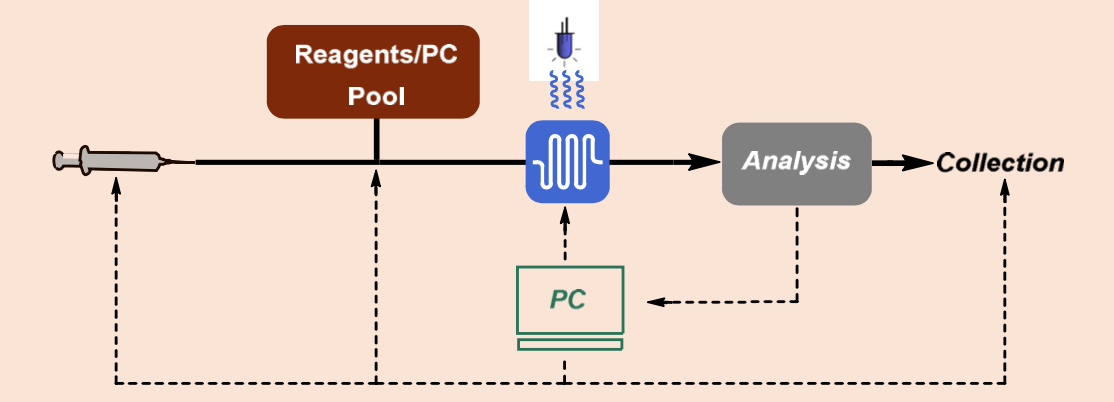Research Project 12
State of the art
- Unoptimized reaction conditions are time- and resource-consuming and rely heavily on the experience of the practitioner.
- When multiple parameters (e.g. reaction time, light intensity, concentration) play a role in the reaction outcome, classical screening protocols change only a single variable at a time and often converge to a local optimum, which do not necessarily reflect the optimal reaction conditions.
- A solution to this important research question is to use Design of Experiments (DoE) methods to systematically determine the relationship between governing reaction variables and reaction outcome.
 Scheme 12. HTE platform for screening photocatalytic conditions.
Scheme 12. HTE platform for screening photocatalytic conditions.
Progress beyond the state of the art
- An automated multifunctional continuous-flow microfluidic platform will be developed, which allows to screen and optimize photocatalytic reaction conditions.
- Inline UV-VIS and inline NMR will be used to collect analytical data. - This platform allows to gather reproducible, standardized kinetic data,
which are generated under identical experimental conditions.
- This data will be fed different Machine Learning (ML) algorithms, which will accelerate the pace of future reaction optimization. The ultimate goal is to develop an algorithm that can suggest suitable reaction conditions to functionalize a given molecule.
Key Objectives & Expected Results
Performance Indicators
- At least three photocatalytic reactions from WP 2 will be optimized using the developed platform, this includes a photocatalytic SET, HAT and ET transformation to cover a wide reaction space.
- A ML-based model will be developed for each transformation, allowing to make predictions about new molecules.





